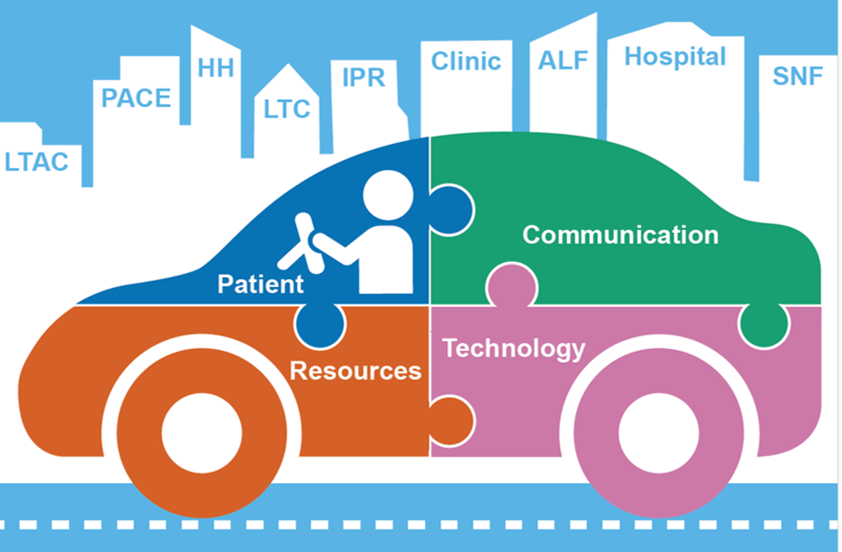Transitions of Care
Transitions of care occur when older adults transfer between settings and providers of care. In Post Acute and Long Term Care (PALTC), transitions of care are expected and common. They include planned or unplanned transfers between acute, post-acute, long-term care, and outpatient settings, for example, transfers from a hospital to a skilled nursing facility. Others, called “micro-transitions” include brief transitions, such as nursing home to a dialysis center.
Transitional care is a set of services and supports to promote coordination and continuity of care as older adults transfer between settings and providers of care. Key care practices of transitional care include:
- Assess care needs in the next setting of care
- Plan care and educate patients and caregivers
- Transfer information and confirm receipt
- Follow-up after transfers to ensure the fit of transition plans.
Prior research indicates that transitional care (1) supports older adults, their caregivers, and health care providers and (2) reduces the risk for acute illness, injury, and hospital readmission. Working across the post-acute and long-term care continuum, an engaged patient, resources, communication, and technology are the keys to effective transitional care.



